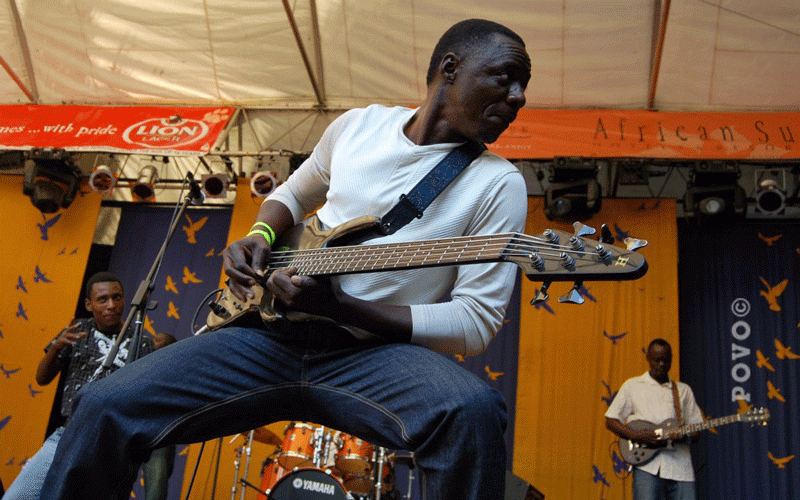
WINKY D, Jah Prayzah and Alick Macheso have one thing in common. First of all, they are Zimbabwe’s top musicians, yet none of them drinks alcohol or is into drug abuse. If they can go on stage without the influence of drugs and make it to the top, why do the lesser musicians see drugs as a catalyst to their performances?
You have heard the words Mutoriro and Musombodhiya. These words are used interchangeably as street language especially by ghetto youths to refer to illicit alcohol brews often made up of diluted ethanol or methanol and sometimes crystal methamphetamine. In short, these alcohol brews are illegal and if one takes them, they are accused of illegal substance abuse.
You have also heard of the word mbanje which is now centuries old. It is also classified among illegal substances.
Musombodhiya and Mutoriro are the latest names given to illicit substances which many a musician and school children are now taking in order to get themselves high.
Musombodhiya (Musombodia) is street language used to refer to an illicit alcohol brew composed of diluted ethanol or methanol or crystal methamphetamine. They are listed in the Dangerous Drugs Act in Zimbabwe. Anyone found dealing in the drug or even just possessing it is liable for prosecution, yet its use has become rampant among artistes and ghetto youths. The late Soul Jah Love was said to be a frequent user of Mutoriro.
Musombodhiya is consumed in very small quantities as it gives the consumer hours of drunkenness and often a time they “stick” (where the consumer will not be able to move their body parts and resemble a zombie) as the alcohol stiffens their body for hours on end. You often hear the word: “Akasticker” referring to one who has consumed the illicit drink.
The illicit brew is sold for US$1 for the 100ml or US$7 for the 750ml bottle and is popular among youth in the high density suburbs.
Mbare, the oldest and one of the most populous suburbs in Harare, is notorious for drug abuse. The market is growing fast there according to close sources. Before it had only been youths in the affluent suburbs who could afford it, but now young people are turning to the drug in townships, where there is little else on offer.
- Car hire caught in sungura euphoria
- Zim artistes train congregants on quality sound production
- Big artistes cannibalised my band: Zanove
- Ex-Q, Winky D, Baba Harare head for Odyssey
Keep Reading
Despite the prohibitive costs, many addicts find a way to fund their insatiable appetite by selling their possessions, while others are driven to steal.
Musicians who cannot afford to buy alcohol from licensed alcohol outlets tend to resort to taking these illicit substances. Illicit substances include Musombodhiya, mutoriro, and ganja.
In Jamaica, the use of ganja as a creative tool is rampant among most reggae and dancehall musicians. They believe that ganja enhances their creative prowess and enhances their stage performances.
Let me also introduce you to other words which are used interchangeably with the word ganja. These are herb, dope, marijuana, weed, gage, mbanje, dagga, spliff, sensimillia, joint, grass, cola, skunk, reefer, tea, locoweed, callyweed, narcotics and gonamombe. Take your pick.
Why are there so many different names for one thing? Some theorists have expounded that the different name tags have been given in order to delude the police about the recreational use of this substance which is deemed illegal in many countries.
Musicians have often cited marijuana, mbanje or ganja as key to their creative process. The first musician to make his marijuana use public was the grinning, gravel-voiced Louis ‘Satchmo’ Armstrong the Jazz maestro from New Orleans whose world famous hit What A Wonderful World is still blowing our minds on airwaves today. He wrote in his autobiography that ganja or "gage," as he referred to it, was "a thousand times better than whiskey ... it's an assistant — a friend." More than half a century later, Beach Boys frontman Brian Wilson, the man responsible for writing The Rolling Stones’ second most important album echoed Armstrong's notion of marijuana being an "assistant:" "Marijuana helped me write those songs,” he said in an interview with the Melody Maker.
There is no need to labour on Rastafarian beliefs. A lot of reggae musicians in Jamaica do smoke weed perfunctorily. They see that as a way of getting inspiration before a performance. I remember getting into trouble with Peter Tosh after I had seen him inhaling and puffing away smoke from his thick spliff. I said, “Why do you smoke it? Don’t you know that ganja is the cause of cancer and you might succumb to lung-cancer if you continue to smoke it?” He replied, “Is where you hear dat? Dis ya ting makes you wiser, seen! Babylon ban it because dem don’t want the Black man to get wiser dan dem. Besides, ganja is the only cure for asthma, you overstand?” He got livid when I asked him if he was suffering from asthma to justify his smoking weed. “Buoy if you keep aksing this kind of raatid foolishness question, it’s blood, you know!” That shut me up.
The symbiotic relationship between ganja and roots reggae helped to clear a psychological space for the flourishing of Jamaica’s brand of cultural nationalism. Its significance to Jamaican culture transcended both this and its function as a religious sacrament for Rastas. As Rasta-influenced reggae musicians extolled the virtues of ganja to the international audience, which included Zimbabwe, ganja became an acceptable catalyst to music performances by youths the world over. Jamaica, roots reggae, and ganja essentially became interchangeable advertisements for each other, with the latter rivalling legal Jamaican exports such as bauxite, sugar cane, and bananas. Despite the religious rhetoric then, a deeper reason for the sacralisation of ganja in Jamaica might be the huge economic benefit it brings to the island.
Romanticized by reggae and a sacrament in the island’s Rastafarian religious sect, the use of ganja is widespread though illegal in Jamaica. A Jamaican narcotics squad patrols warehouses, sabotages clandestine airstrips, and intimidates growers, and the Jamaican government has sponsored helicopter flights over parts of the island to burn ganja fields. Yet these campaigns from a Jamaican government pressured by US politicians are not appreciated by the majority of Jamaicans. A recent poll indicated that 62 percent of all Jamaicans opposed the curtailment of marijuana exportation to the United States, in part because so many benefit from it. In 1983, John Holt in protest sang, “Police In Helicopter, Searching Fi Marijuana. If you Continue to Burn Up Me Herb, Me Gonna Burn Up Your Canefield! We no Trouble Your Banana We no Trouble Your Corn. So Why You Trouble Our Ganja?”
As a result of the situation, some have suggested that the connection between reggae and ganja may represent the most complex “drug-music nexus” in the sphere of global popular music. But what has been less documented is the role of ganja in the sonic transformation of Jamaican music in the 1970s. In the 1970s, during the peak of Bob Marley’s career, ganja was an important catalyst in the sound of dub music. For example, some musicians claim a correlation between the sound of the music produced in different recording studios, and various producers’ willingness or reluctance to let musicians smoke ganja in their studios. Similar to the case of psychedelic rock music of the 1960s, mind-altering substances were a catalyst in the expansion of Jamaica’s sonic imagination in the 1970s, inspiring musicians and engineers to expand their conception of the capabilities of their equipment.
With that in mind, should ganja smoking, use of mutoriro or musombodhiya which are now found everywhere in the country, be legalized in Zimbabwe?
This comes as the country has been experiencing disturbing reports of young people, including school children, engaging in alcohol, drug and substance abuse. In a survey carried out last year, it was revealed that Zimbabwean children, as young as 11, were taking drugs, with mental institutions recording a surge in dope consumption.
At private schools, learners who are mostly from rich families, reportedly use high-end drugs such as cocaine and nicotine.
However in high density suburbs,the taking of mbanje, mutoriro and musombodhiya is widespread and many schoolchildren have found their way into consuming these substances.
There is a network of drug spots around the city of Harare where other drugs such as cannabis, as well as prescription drugs that are commonly misused such as codeine, the cough syrup Broncleer, which contains codeine, and pills that are usually prescribed to combat mental illness are sold.
These children have revealed that there are trafficking syndicates who also come to schools to supply the drugs to the learners. They also believe that the drugs assist them in opening their minds and in their studies just like many a musician think that they need drugs in order to be more creative.
Unfortunately, the country’s laws penalise people found using the drugs and not the source. There is need for amendment of our drug laws to effectively control drug supply and usage in communities. There is no need to take drugs in order to enhance creativity.
- Feedback: [email protected]











